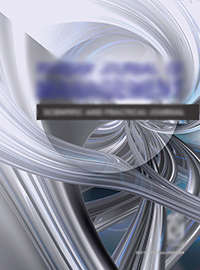The paper presents the point of view of the anomaly Chiari 1 and retroareolar cyst from the position of the possible causal correlation of these diseases with scoliosis. Scoliosis occurs in patients with anomaly Chiari 1 according to different data from 35 to 60%. The authors didn’t find scientific information about the combination of retroareolar cysts with scoliosis. The authors made an attempt to combine these diseases from the point of view of a single etiopathogenetic mechanisms based on the study of blood flow at the level craniovertebral transition. Patients were divided into two groups and two subgroups. The first group included 67 patients with anomaly Chiari 1, the second – 26 patients with retroareolar cysts. Subgroups were formed from patients, necessarily had scoliosis: the subgroup «A» is for patients with scoliosis and anomaly Chiari 1, the subgroup “B” – for patients with scoliosis and retroareolar cyst. Neurological, x-ray examination was carried out in all patients. The diagnostic and treatment algorithm for patients with a combination of scoliosis and anomaly Chiari 1 taking into account the dominant pathology has been defined. It is established that scoliosis often combined with abnormalities of craniovertebral transition, including retroareolar cyst. Neurosurgical treatment of anomalies of craniovertebral transition can posi-tively influence on the course of the accompanying scoliosis.
scoliosis, retroareolar cyst, Chiari type 1malformation, vascular pathology
Сколиотическая болезнь относится к числу наиболее сложных проблем ортопедии, неврологии и нейрохирургии. Это определяется высокой частотой ее проявления и прогрессирующим течением. Несмотря на постоянный поиск этиологии идиопатического сколиоза и широкое представление теоретических аспектов возникновения сколиоза в отечественной и зарубежной литературе, врачам в 80% случаев приходится иметь дело с деформациями позвоночника, природа которых не установлена [3, 4, 5]. По данным В.Д. Чаклина и Е.А. Абальмасовой (1973) «неясные» искривления позвоночника в детском возрасте составляют 24,4% [1]. Другие авторы приводят значительно большие цифры: К.А. Молчанова до 60-70%, А.Б. Гальдесман до 40%. В последнее время в литературе можно встретить публикации о частом сочетании сколиоза с различной патологией краниовертебрального перехода. Чаще всего сколиоз сопутствует самому распространенному заболеванию этой области – аномалии Киари 1 (АК1). Неврологическая симптоматика, сопровождающая это заболевание, хорошо изучена. Однако единой шкалы оценки неврологических симптомов этой аномалии у детей нет. В литературе применительно к детям описаны такие симптомы, как головная боль, боль в шее. Компрессионные стволовые симптомы, апноэ сна, приступы цианоза, головокружение, изменение глотания, нарушение устойчивости и движения, чувствительные расстройства не свойственны детскому возрасту и проявляются, преимущественно, у взрослых пациентов [8].
1. Chaklin, V.D., Abal´masova E.A. Skolioz i kifozy. M.: Meditsina, 1973. 256 s.
2. Shamburov D.A. Status dizrafikus. Trudy LNIITO im. R.R.Vredena. L., 1961. S. 66-98.
3. Basu P.S., Elsebaie H., Noordeen M.H. Congenital spinal deformity: a comprehensive assessment at presentation. Spine. 2002. Vol. 27. P. 2255-2259.
4. Diard F., Chateil J.F., Hauger O. [et al] Imaging of chilhood and adolescent scoliosis. J. Radiol. 2002. Vol. 83. R.1117-1139.
5. Edelstein J.E., Bruckner J.S., Slack, Inc. Thorofare NJ, Orthotics: a comprehensive clinical approach, 2002. P. 105-122.
6. Eule J.M., Erickson M.A., O`Brien M.F. Chiari I malformation associated with syringomyelia and scoliosis: a twenty-year review of surgical and nonsurgical treatment in a pediatric population. Spine. 2002. №27. R. 1451-5.
7. Ghanem I.B., Londono C., Delalande O., Dubousset J.F. Chiari I malformation associated with syringo-myelia and scoliosis. Spine. 1997. № 22. R. 1313-7.
8. Klekamp J. Surgical treatment of Chiari I malformation - analysis of intraoperative findings, complications, and outcome for 371foramen magnum decompressions. Neurosurgery. 2012. Vol. 71. R. 365-380.





